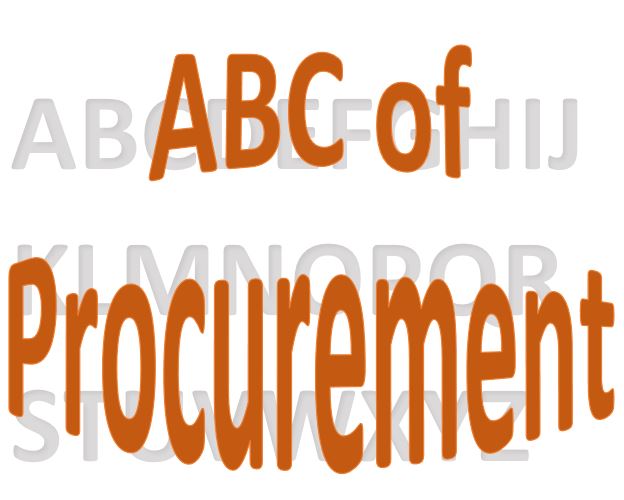What is ESG, and How Can Procurement Play a Role?
ESG has become an acronym that you can find in almost every business report. You may not know, but it is a recently created concept. It was coined only in 2004 in one of the UN reports.
To start with, let us understand what ESG means. It is:
“ …the impact a company has on its surroundings aside from delivering products and services that are its primary reason for existing.”
To be precise, it stipulates that a company has to take care of:
E-environmental protection
S-social equity
G-Governance in line with the requirements of the law
Here are some examples:
Environmental:
- Climate change
- Pollution
- Waste
- Deforestation
Social:
- Human rights
- Modern slavery
- Employee rights
- Child labour
Governance:
- Corruption
- Tax
- Country laws
- Business ethics

The business’s environmental, social and governance (ESG) influence has become a focal point in recent years. With the increased push for business that cares for people, the planet, and profit, including those principles in day-to-day business has become the highest priority. Since supplies account for 30-50% (in some organizations up to 90%) of the overall spending of a Company, applying the ESG framework to procurement will positively affect the Company as a whole.
The Benefits of Committing to Sustainable Sourcing
A truly sustainable procurement has a balanced approach to all three pillars of ESG. As a result, the company benefits in many way
- Cost reduction through the reduce, reuse, recycle practices
- Cost reduction using new technologies and processes that are sustainable and more efficient.
- Reduction in risks related to potential fines, lawsuits or reputational damage from the Government or another organization.
- Increased reputation and brand image. Especially among the younger population, who prefer companies that are actively working on the reduction of pollution.
- Increased employee retention and happiness. Employees who have good working conditions and a sense of pride in working for such a company stay longer and are more productive.
ESG is not only a “good to have” any more. For example, The German Supply Chain Act is a law that:
“regulates the responsibility of German enterprises to respect human rights in global supply chains. This includes, for example, protection against child labour, the right to fair wages, as well as environmental protection.”
It came into force in 2023 and, for now, applies only to large multinational companies. We also have a Supply Chain law on the EU level, called the “EU Corporate Sustainability Due Diligence Directive”.
How these laws are to be implemented, is yet to be seen. Nonetheless, it is a start that will most probably spread across the World in the years to come.
How Can Companies Use Their Supply Chain to Achieve Their ESG Goals?
In the sources section, you will find the link to a UN report with a complete guide on utilizing your Supply Chain to contribute to the ESG goals of your organisation.
I will just add a couple of practical examples from my career:
Environmental:
- Getting consultants who will help the company with the Scope 1 and 2 carbon footprint calculation and Carbon footprint reduction plan
- Green chemicals, items manufactured from recycled materials: paper, stationery, cleaning clothes etc
- Recycle projects with vendors who do recycling. I had a great project collecting and recycling old electronic devices.
Social:
- Ensure your employees get all they need for their work, of the required quality. If you are getting quotes for substandard materials, don’t settle. Your colleague may get hurt because the helmet was not a good protection, and you tried to save some money.
- Support small local vendors. You will recognize those who are eager to learn and grow. Provide feedback and help them in any (ethical) way.
- Discuss with your vendors how to support the local community.
Governance:
- Have a well-written and often revised Supplier Code of Conduct. It has a dual purpose:
- To protect your company in the case something goes wrong on the Vendor side.
- To push the vendor to improve his standards of Operations.
- Include in your RFQs and contracts, ESG-related clauses. Do not allow a contractor to pollute the area with rubbish. Or to have his employees working 14-hour shifts. Many large companies faced public bashing because of their subcontractors.
- Audit your main vendors. Not only do they have to adhere to your Code of Conduct. They also need to work on extending the same game rules to their vendors. This will create a chain reaction of a much wider reach.
Exploring Different Strategies for Implementing Sustainable Sourcing Practices
To move our sourcing to a more sustainable mode, procurement needs to think in one more dimension.
Spend analysis adds more parameters to monitor — CO2 emission and usage of recycled materials. You would like to know how much of your spending is done sustainable and/or Carbon-neutral
Supplier selection — we want vendors who are more advanced in their sustainability practices than us.
Supplier engagement — Your value-adding projects with your vendors will now add to the sustainability goal. We are no longer changing packaging to save, but also to reduce plastic waste.
Internal collaboration — If we do not have the buy-in and support of our stakeholders, nothing will work. Procurement is here, once more, the connector: We connect the old problems with new solutions.
Reporting — Our Procurement dashboard just got a couple more metrics, like:
* Recycled waste
* Scope 3 emissions from supplier
* Green certificated vendors.
Conclusion: Leveraging Procurement to achieve your ESG goals
ESG does not require large funds or a complete revamp of the supply chains. A change of mindset, for a start. That will over time influence all processes and make the company Sustainable.
Procurement has not only access to suppliers but also to information and best practices. And by leveraging external knowledge, our Organization can reach its goals faster, while saving money during the process.
Disclaimer (and a shout-out):
Rytr AI writer https://rytr.me/ gave me the outline for this blog. While I have written the content myself, AI was a great help to start the article.
Sources:
The Making and Meaning of ESG; https://www.ecgi.global/sites/default/files/working_papers/documents/esgcoverecgifinal.pdf
The Supply Chain act
https://www.bmas.de/EN/Europe-and-the-World/International/Supply-Chain-Act/supply-chain-act.html#:~:text=1.,implementing%20defined%20due%20diligence%20obligations.
EU Parliament approves Supply Chain law
https://www.hrw.org/news/2024/04/24/eu-parliament-approves-supply-chain-law#:~:text=The%20proposed%20law%20requires%20large,in%20the%20previous%20financial%20year.
Supply Chain Sustainability: A Practical Guide for Continuous Improvement
https://unglobalcompact.org/library/205


